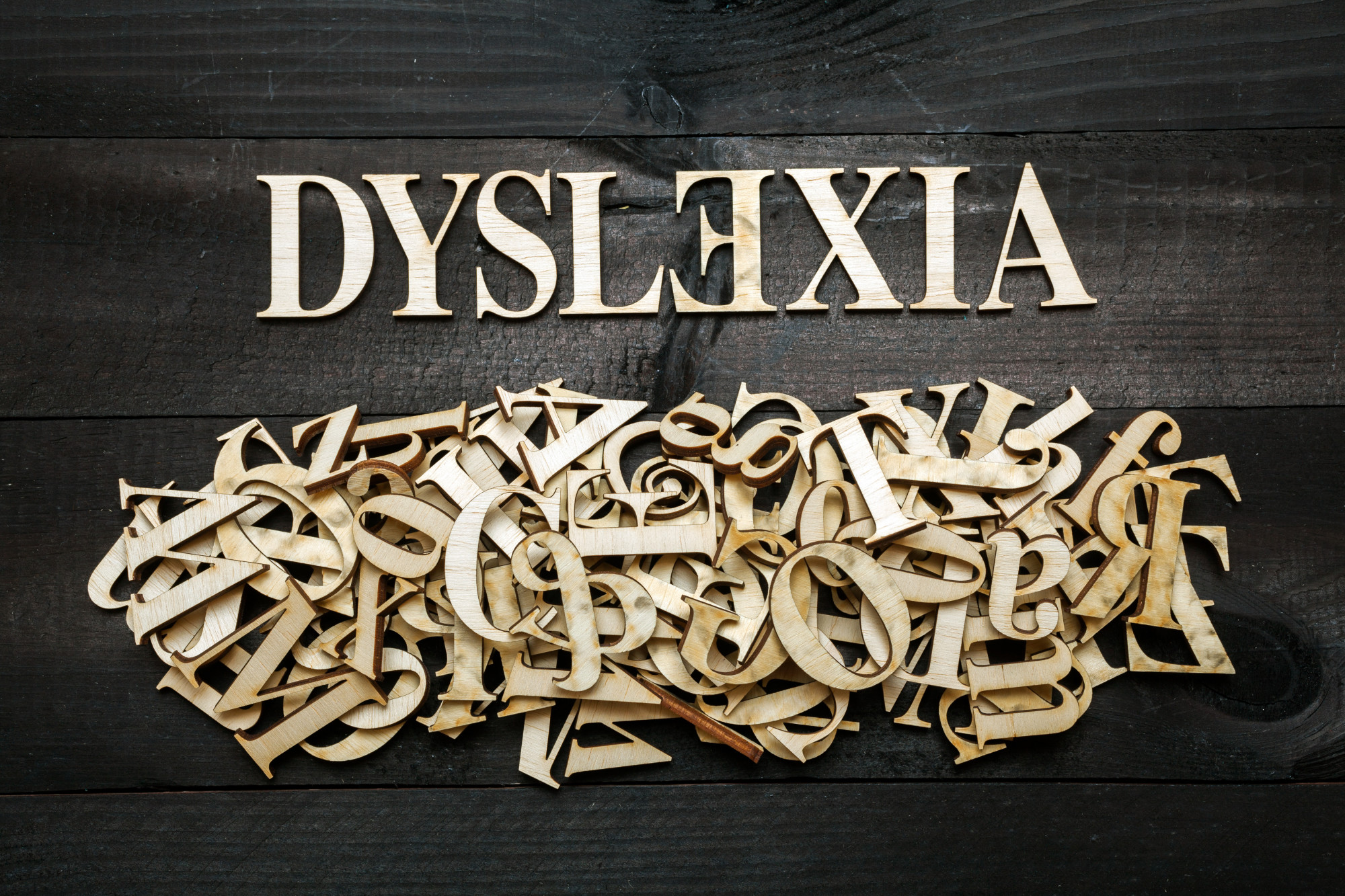
”Dyslexia” word with wooden letters on dark background
You know how when you’re really hot, it’s hard to imagine how being cold feels? Well, that’s how it feels for people without dyslexia to imagine having it, and vice versa. So if you’re struggling to understand a dyslexia diagnosis, you’re in the right place.
There are different types of dyslexia and also ways the same type manifests differently in different people. To learn more about all the types and their symptoms, read below.
What is Dyslexia?
Basic dyslexia is a processing disorder, often called a learning disorder, that interferes with someone’s ability to read, spell, and comprehend written text.
The most common basic dyslexia signs are children reporting that the letters “swim” or get mixed up on the page, but many children show signs before they try to learn to read.
These may include:
- Taking longer to speak than other children
- Not advancing in spoken sentence structures
- Difficulty with number and letter identification
- Trouble learning new words
Many of these symptoms can be mistaken as the early signs of autism – which is why seeing a child specialist is important when seeking a diagnosis.
If a child is in school, they may be hiding their troubles from their parents because they feel incapable or unhappy with their ability. These children often show a lack of interest in school, may act out, or start showing signs of low self-esteem, calling themselves names like “stupid” etc.
Finding the right treatment early on, like Read Academy, can curb these behavioral trends.
What Are the Types of Dyslexia?
The number of dyslexia types differs based on what source you use – but there are four “main” types.
Phonological Dyslexia
This type of disorder is an issue with auditory processing (hearing the sounds) and matching them to written forms. It’s sometimes called dysphonetic dyslexia, or auditory.
Surface Dyslexia
This subtype of dyslexia is an issue with the visual processing of words, especially when they look one way, but are spelled another. Think about words like colonel, island, or subtle* – words that aren’t pronounced exactly as they’re spelled.
*Many children learning to read have problems with these types of words at first, but memorize the difference. Those with this type of dyslexia have more trouble for longer than non-dyslexic children.
Rapid Naming Dyslexia
This type of dyslexia involves a child taking a long time to connect the phonological sound, to the written or named character. It is the more mild version of the next type…
Double Deficit (DDD)
When someone without the disorder hears the sound “Duh”, we automatically know it’s the letter D, and can name that out loud within a second or two. Someone with DDD has trouble both recognizing the sound with the letter and the amount of time it takes them to name it (verbal processing).
This is the most “severe” type of dyslexia, though the disorder is not usually diagnosed in levels of severity.
Getting Help for a Dyslexic Child
No one wants their child to suffer or struggle, so know that you’re doing the right thing by learning everything about dyslexia if you suspect your child has it. The next step is to talk to your pediatrician, who can recommend a specialist in your area. Most schools, or at least school districts, have a specialist who your child’s teacher can put you in contact with, too.
We hope you’ve enjoyed this guide on the different types of dyslexia and wish you luck on your treatment journey. For more helpful guides like this – bookmark our blog!